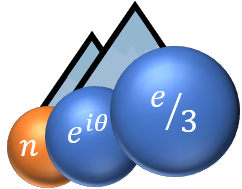In a HOM (Hong-Ou-Mandel) experiment, two identical particles are sent on a beam-splitter and this collision is studied as a function of the time delay between the two particles. For electron collisions, the width of the HOM dip is proportional to the width of the incoming electronic wavepackets and the experiment gives information on their coherence. In the case of anyons, interferences are due to time-domain braiding with the elementary excitations. The width of the HOM dip is then expected to be set by a thermal time scale that reveals their braiding statistics.
In this work, we implement a HOM experiment in the fractional quantum Hall effect (FQHE) at filling factor ν=1/3. We send narrow voltage pulses, separated by a tunable time delay, on a quantum point contact (QPC) and measure the HOM noise at the output. We compare with this setup different injected charges per pulse and temperatures. We observe a widening of the dip for fractionally charged pulses and the disappearance of this effect at higher temperature, showing the emergence of anyonic statistics in the HOM dip.
|
|
|
|
Hong-Ou-Mandel interferences between fractional excitations in the ν=1/3 fractional quantum Hall state
1 : Laboratoire de physique de l'ENS - ENS Paris
Sorbonne Université, Centre National de la Recherche Scientifique, Université Paris Cité, Département de Physique de l'ENS-PSL
2 : Centre de Nanosciences et de Nanotechnologies
Université Paris-Saclay, Centre National de la Recherche Scientifique : UMR9001, Centre National de la Recherche Scientifique
|

 PDF version
PDF version
